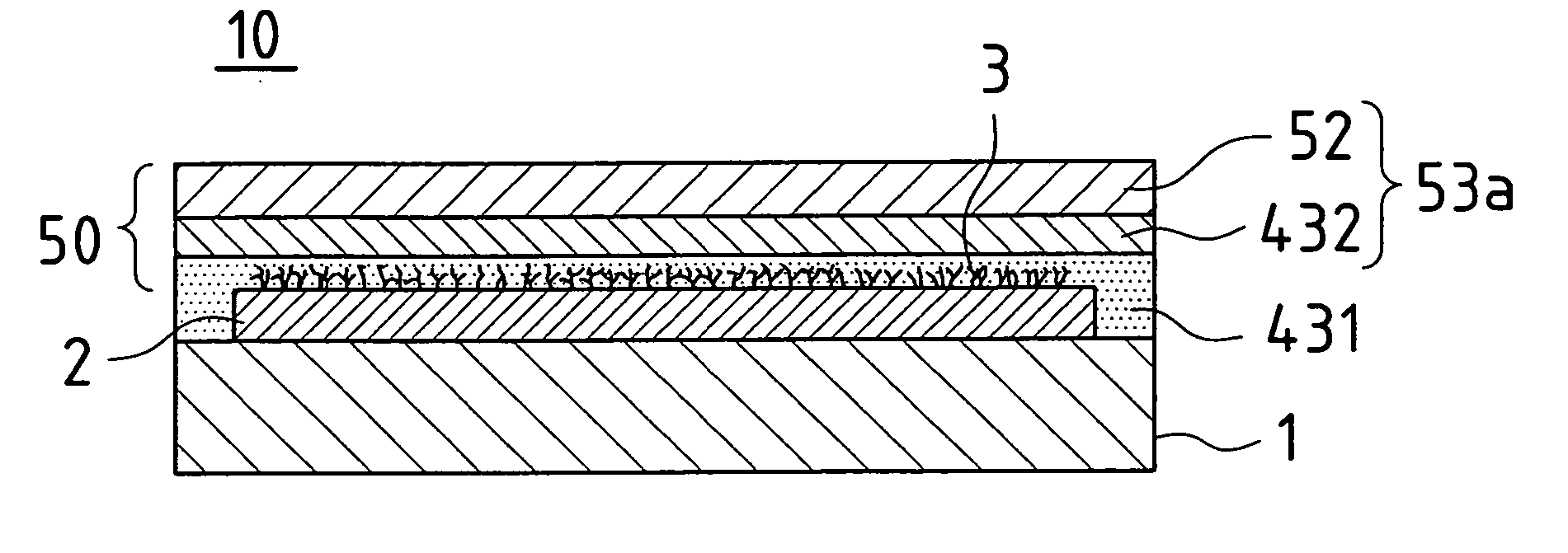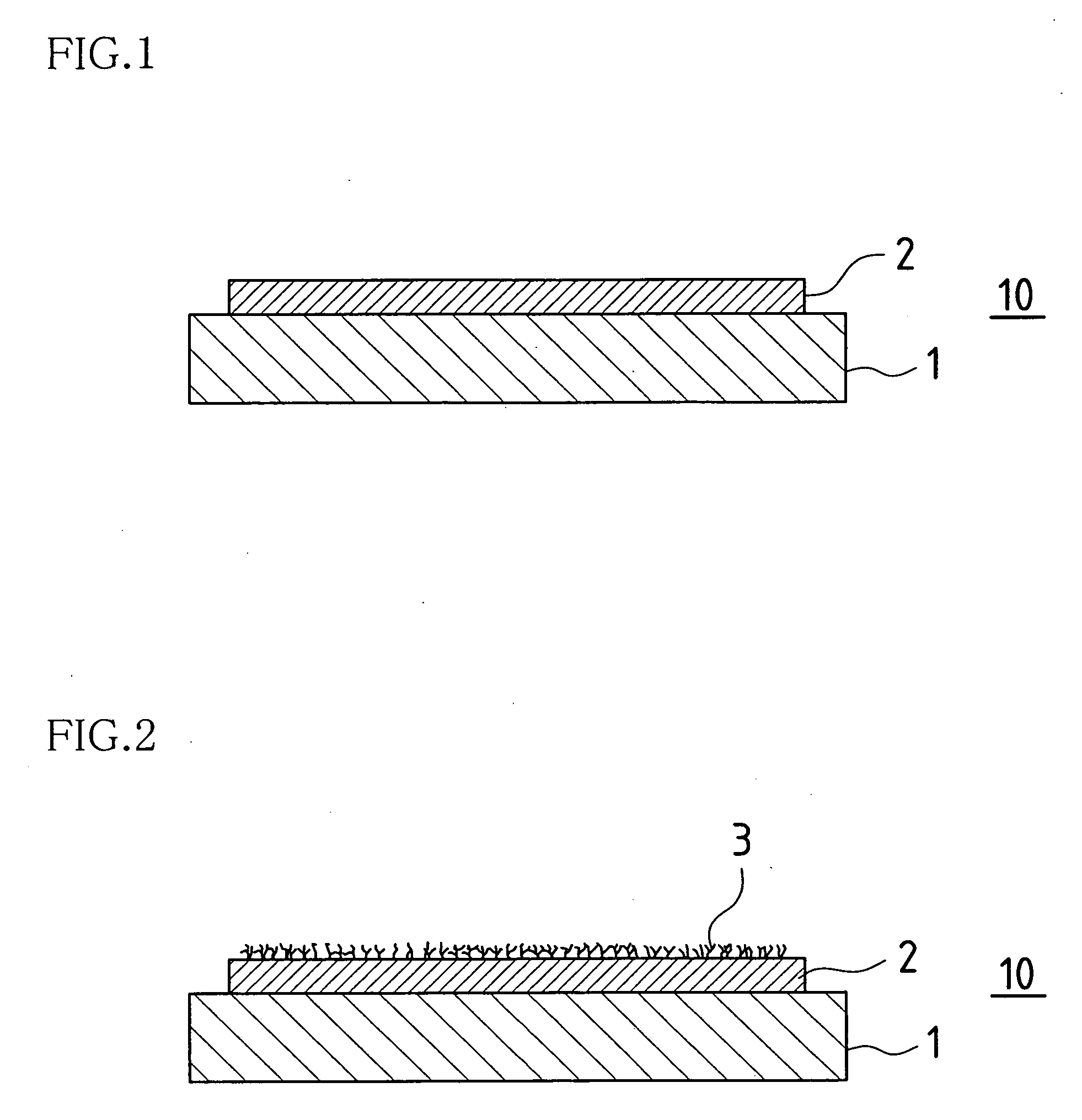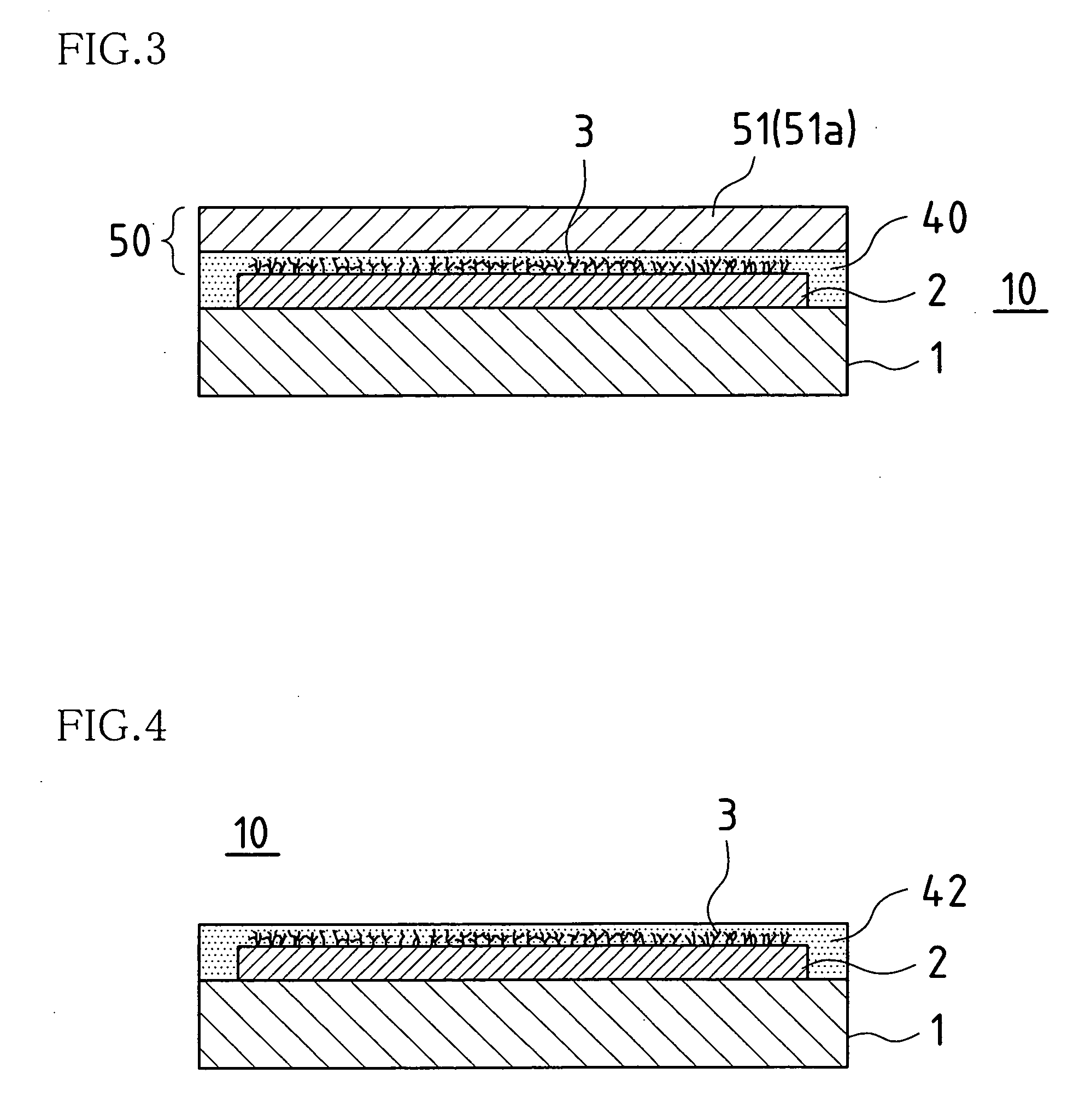Method for producing printed wiring board
a technology of printed wiring and printed circuit, which is applied in the direction of printed circuit manufacturing, printed circuit aspects, connection contact member materials, etc., can solve the problems of blistering, affecting the bend performance of the same, and the failure of electronic devices, so as to improve the contact performance and bond strength between the conductor portion and the insulating resin layer, the effect of improving the bond strength and improving the bond strength
- Summary
- Abstract
- Description
- Claims
- Application Information
AI Technical Summary
Benefits of technology
Problems solved by technology
Method used
Image
Examples
embodiment 1
[0045] FIGS. 1 to 3 are schematic cross-sectional views of an enlarged conductor portion of a printed wiring board according to Embodiment 1 of the present invention.
[0046] A printed wiring board 10 is a flexible wiring board that has a conductor pattern formed as a conductor portion 2 (not shown) on one side (the side that becomes an outer side after laminating) of a wiring board substrate 1 that is made of a polyimide or polyester film. The conductor pattern on the wiring board substrate 1 is formed with a copper film. Although it is not shown in FIG. 1, an adhesive layer may be provided between a conductor of the conductor pattern and the wiring board substrate 1. First, an appropriate plating pretreatment is performed on the surface of the conductor of the conductor pattern of the wiring board substrate 1.
[0047] Next, projecting metal crystals are formed on the surface of the above mentioned conductor portion 2 using an electroplating method or a chemical plating method. In th...
embodiment 2
[0055] Hereafter, Embodiment 2 of the present invention will be described. FIGS. 4 and 5 are schematic cross-sectional views that show Embodiment 2 according to the present invention. In each explanation of a method for producing a printed wiring board according to Embodiments 2 to 6, the detailed explanations are omitted by using the same numeric references for the portion that has the same configuration as Embodiment 1.
[0056] As shown in FIG. 4, in Embodiment 2, numerous dendrites 3 are formed on a conductor pattern 2, and, subsequently, an adhesive 42 in a flowing liquid state is applied onto the wiring board substrate 1 and filled into the spaces between the dendrites 3. In this embodiment, a denatured acrylic adhesive is used as the adhesive 42.
[0057] The adhesive 42 may be applied in a method as required by the properties of the adhesive used, such as in a roll coating method, a spray method and a printing method, and is applied and filled so that the spaces between the dend...
embodiment 3
[0060] Hereafter, Embodiment 3 of the present invention will be described. FIGS. 6 and 7 are schematic cross-sectional views that show Embodiment 3 of the present invention. This embodiment may be interpreted as a combination of Embodiments 1 and 2 described above.
[0061]FIG. 6 shows a state in which numerous dendrites 3 have been formed on the surface of a conductor portion 2 and a liquid adhesive 431 has been applied thereon in the same manner as in Embodiments 1 and 2.
[0062] An insulating resin layer 50 is then formed. In the illustrated example, the insulating resin layer 50 is formed by laminate bonding a cover lay material 53a that has an adhesive layer in a semi-cured state formed thereon by applying in advance an adhesive 432 to a polyimide film, polyester film, or the like serving as an insulating resin plate 52.
[0063] Next, as shown in FIG. 7, after the adhesive 431 that has been applied onto a wiring board substrate 1 and filled into the dendrites 3 becomes semi-cured o...
PUM
| Property | Measurement | Unit |
|---|---|---|
| pressure | aaaaa | aaaaa |
| temperature | aaaaa | aaaaa |
| time | aaaaa | aaaaa |
Abstract
Description
Claims
Application Information
 Login to View More
Login to View More - R&D
- Intellectual Property
- Life Sciences
- Materials
- Tech Scout
- Unparalleled Data Quality
- Higher Quality Content
- 60% Fewer Hallucinations
Browse by: Latest US Patents, China's latest patents, Technical Efficacy Thesaurus, Application Domain, Technology Topic, Popular Technical Reports.
© 2025 PatSnap. All rights reserved.Legal|Privacy policy|Modern Slavery Act Transparency Statement|Sitemap|About US| Contact US: help@patsnap.com



